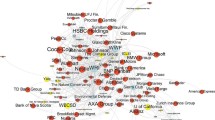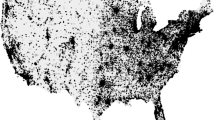Abstract
In the 1980s, one of the fundamental topics of scientific debate was the discussion of the global consequences of nuclear war. At that time, the hypothesis of “nuclear winter” emerged, in which scientists attempted to analyze the theoretical possibility of a sharp cooling of the Earth after mass fires and find natural analogues of a potential climatic catastrophe. In the following decades, the “nuclear winter” hypothesis went through various stages of criticism and reassessment. In the early 2000s, studies of the problem became regional in nature, focusing mainly on the possible consequences of local nuclear conflicts. In this article, the authors analyze the stages of development of research on the “nuclear winter” hypothesis, focusing on the Russian and American approaches, and conclude that the body of work produced by American and Soviet scientists in 1983–1985 represents the first attempts by the scientific community to conceptualize the problem of responsible nuclear policy.
Similar content being viewed by others
Notes
R. Wolfson and F. Dalnoki-Veress, “The devastating effects of nuclear weapons,” MIT Press Reader, Mar. 2 (2022). https://thereader.mitpress.mit.edu/devastating-effects-of-nuclear-weapons-war/. Cited January 25, 2023.
Paul Crutzen (a Dutch atmospheric chemist who studied the relationship between nitrogen oxides and ozone photochemistry) moved from Stockholm University to Oxford and then to Boulder, and by that time he was Director of the Air Chemistry Department at the Max Planck Institute for Chemistry in Mainz, Germany. John Burks was an Associate Professor of chemistry at the University of Colorado, Boulder, and a Researcher at that university’s Cooperative Institute for Research in Environmental Sciences. For more details, see Badash 2009.
Martin 1988.
Crutzen, Birks 1982.
Barton et al. 1984.
Turco et al. 1983.
Horowitz et al. 1984; Sagan et al. 1986.
Turco et al. 1983.
For detailed biographies of the scientists, see Dörries 2011.
Badash 2009.
Dörries 2011; Badash 2009.
Chester et al. 1984.
Thompson et al. 1986.
Thompson et al. 1986.
R. Wolfson and F. Dalnoki-Veress, “The devastating effects of nuclear weapons,” MIT Press Reader, Mar. 2 (2022). https://thereader.mitpress.mit.edu/devastating-effects-of-nuclear-weapons-war/. Cited January 25, 2023.
Aleksandrov, Stenchikov 1983; Golitsyn, Ginzburg 1983.
Aleksandrov 1982.
Tarko 2022.
For more information about this stage, see Samoylovskaya 2023.
Barloewen et al. 2010, 396.
Sagan 1983, 275.
Hippel 1983.
Teller 1984.
D. Horowitz was a Professor of political science at the Hebrew University of Jerusalem; R.J. Lieber was a Professor of government at Georgetown University. Horowitz et al. 1984.
Horowitz et al. 1984, 995.
For more information on the topic of strategic relations between Russia and NATO in the context of events in Ukraine, see Stefanovich et al. 2023.
Horowitz et al. 1984, 996.
Horowitz et al. 1984, 1002.
For contemporary discussions on threshold values, see Bogdanov 2023.
Thompson et al. 1986.
Sagan 1983.
Hippel 1983; Teller 1985.
Walker 2010.
For a more detailed analysis of discussions on strategic issues in the context of the “nuclear winter” hypothesis, see Badash 2009.
“Reagan’s nuclear war briefing declassified,” National Security Archive. https://nsarchive.gwu.edu/briefing-book/nuclear-vault/ 2016-12-22/reagans-nuclear-war-briefing-declassified#_ednref9. Cited January 1, 2023.
Coupe et al. 2019.
Nacht et al. 2010.
Toon et al. 2019.
Ginzburg et al. 1992.
Bracken 2000.
Bracken 2000.
Кокошин 2003.
Bivens 2022.
H. Kristensen, M. Korda, E. Johns, and K. Kohn, “Status of world nuclear forces,” Federation of American Scientists, Mar. 31 (2023). https://fas.org/initiative/status-world-nuclear-forces/. Cited January 25, 2023.
Nuclear ammunition, Ministry of Defense of the Russian Federation. https://encyclopedia.mil.ru/encyclopedia/dictionary/ details_rvsn.htm?id=13804@morfDictionary
Sagan 1983.
REFERENCES
V. V. Aleksandrov, “Atmospheric general circulation model with baroclinic adjustment,” Dokl. Akad. Nauk SSSR 265 (5), 1094–1097 (1982) [in Russian].
C. von Barloewen and G. Naumova, Book of Knowledge: Conversations with Outstanding Thinkers of Our Time (Progress-Traditsiya, Moscow, 2010) [in Russian].
K. V. Bogdanov, “Deterrence in the era of small forms,” Russ. Glob. Aff. 21 (3), 42–52 (2023) [in Russian]. https://globalaffairs.ru/articles/sderzhivanie-v-epohu-malyh-form/
G. S. Golitsyn and A. S. Ginzburg, Climatic Consequences of a Possible Nuclear Conflict and Some Natural Analogues (IFA AN SSSR, Moscow, 1983) [in Russian].
A. A. Kokoshin, Nuclear Conflicts in the 21st Century (Types, Forms, Possible Participants) (Bukinist, Moscow, 2003) [in Russian].
N. A. Samoylovskaya, “On the Prohibition of Nuclear Tests in Three Environments: Between Fear and Doubt,” Polis. Political Studies, No. 6, 52–65 (2023) [in Russian]. https://doi.org/10.17976/jpps/2023.06.05
V. V. Aleksandrov and G. L. Stenchikov, On the Modeling of the Climatic Consequences of the Nuclear War (Computing Centre of AS USSR, Moscow, 1983).
L. Badash, A Nuclear Winter’s Tale : Science and Politics in the 1980s (MIT Press, Cambridge, MA, 2009).
I. J. Barton, and W. P. Garth, “‘Twilight at Noon’ overstated,” Ambio 13 (1), 49–51 (1984). http://www.jstor.org/stable/4312989
M. Bivens, Nuclear Famine: Even a “Limited” Nuclear War Would Cause Abrupt Climate Disruption and Global Starvation (International Physicians for the Prevention of Nuclear War, 2022). https://www.ippnw.org/wp-content/uploads/2022/09/ENGLISH-Nuclear-Famine-Report-Final-bleed-marks.pdf
P. Bracken, “The Second Nuclear Age,” Foreign Aff. 79 (1), 146–56 (2000). https://doi.org/10.2307/20049619
C. V. Chester, F. C. Kornegay, and A. M. Perry, A Preliminary Review of the TTAPS Nuclear Winter Scenarios (Oak Ridge National Laboratory, Oak Ridge, 1984). https://inis.iaea.org/collection/NCLCollectionStore/_Public/16/027/16027025.pdf
J. Coupe, C. G. Bardeen, A. Robock, and O. B. Toon, “Nuclear winter responses to nuclear war between the United States and Russia in the whole atmosphere community climate model version 4 and the Goddard Institute for Space Studies ModelE,” J. Geophys. Res. Atmos., No. 124, 8522–8543 (2019). https://doi.org/10.1029/2019JD030509
P. J. Crutzen and J. W. Birks, “The atmosphere after a nuclear war: Twilight at noon,” Ambio 11 (2/3), 114–125 (1982). http://www.jstor.org/stable/4312777
M. Dörries, “The politics of atmospheric sciences: ‘Nuclear winter’ and global climate change,” Osiris 26 (1), 198–223 (2011). https://doi.org/10.1086/661272
A. Ginzburg, V. Haritonenko, and O. Kurliand-skaya, “Possible effects of smoke from Kuwaiti oil fires on climate and society,” in Climate Change and Energy Policy (American Institute of Physics, New York, 1992), pp. 160–164.
F. von Hippel, “The myths of Edward Teller,” Bull. At. Sci. 39 (3), 6–12 (1983). https://doi.org/10.1080/00963402.1983.11458958
D. Horowitz, R. J. Lieber, E. N. Luttwak, P. Clawson, R. Seitz, and C. Sagan, “Nuclear winter,” Foreign Aff. 62 (4), 995–1002 (1984). https://doi.org/10.2307/20041916
B. Martin, “Nuclear winter: Science and politics,” Sci. Public Policy 15 (5), 321–334 (1988). https://doi.org/10.1093/spp/15.5.321
M. Nacht, M. Frank, and S. Prussin, “The second nuclear age (1992–Present),” in Nuclear Security: The Nexus Among Science, Technology and Policy (Springer, Cham., 2010), p. 213–263. https://doi.org/10.1007/978-3-030-75085-5_5
C. Sagan, “Nuclear war and climatic catastrophe: Some policy implications,” Foreign Aff. 62 (2), 257–292 (1983). https://doi.org/10.2307/20041818
C. Sagan, R. Turco, G. W. Rathjens, R. H. Siegel, S. L. Thompson, and S. H. Schneider, “The nuclear winter debate,” Foreign Aff. 65 (1), 163–178 (1986). https://doi.org/10.2307/20042868
D. V. Stefanovich and A. S. Ermakov, “Guns before butter: A new reality?” Russ. Glob. Aff. 21 (4), 24–46 (2023). https://doi.org/10.31278/1810-6374-2023-21-4-24-46
A. M. Tarko, “About the history and modeling of nuclear winter,” Norwegian J. Dev. Int. Sci., No. 97, 3–13 (2022).
E. Teller, “Climatic change with nuclear war,” Nature 318 (99) (1985). https://doi.org/10.1038/318099a0
E. Teller, “Widespread after-effects of nuclear war,” Nature 310, 621–624 (1984). https://doi.org/10.1038/310621a0
S. L. Thompson and S. H. Schneider, “Nuclear winter reappraised,” Foreign Aff. 64 (5), 981–1005 (1986). https://doi.org/10.2307/20042777
O. B. Toon, C. G. Bardeen, A. Robock, L. Xia, H. Kristensen, M. McKinzie, R. J. Peterson, C. S, Har-rison, N. S, Lovenduski, and R. P. Turco, “Rapidly expanding nuclear arsenals in Pakistan and India portend regional and global catastrophe,” Sci. Adv. 5 (10), 1–13 (2019). https://doi.org/10.1126/sciadv.aay5478
R. P. Turco, O. B. Toon, T. P. Ackerman, J. B. Pollack, and C. Sagan, “Nuclear winter: Global consequences of multiple nuclear explosions,” Science 222, 1283–1292 (1983).
W. Walker, “The UK, threshold status and responsible nuclear sovereignty,” Int. Aff. 86 (2), 447–464 (2010).
Funding
This work was supported by ongoing institutional funding. No additional grants to carry out or direct this particular research were obtained.
Author information
Authors and Affiliations
Corresponding authors
Ethics declarations
The authors of this work declare that they have no conflicts of interest.
Additional information
Translated by B. Alekseev
Publisher’s Note.
Pleiades Publishing remains neutral with regard to jurisdictional claims in published maps and institutional affiliations.
Aleksandr Samuilovich Ginzburg, Dr. Sci. (Phys.–Math.), is Head of the Laboratory of Mathematical Ecology and Chief Researcher at the Obukhov Institute of Atmospheric Physics (IAP), Russian Academy of Sciences. Natalya Aleksandrovna Samoylovskaya is a Junior Researcher at the Institute for International Studies, MGIMO University.
Rights and permissions
About this article
Cite this article
Ginzburg, A.S., Samoylovskaya, N.A. The “Nuclear Winter” Hypothesis and a Responsible Nuclear Policy. Her. Russ. Acad. Sci. (2024). https://doi.org/10.1134/S1019331624010015
Received:
Revised:
Accepted:
Published:
DOI: https://doi.org/10.1134/S1019331624010015




